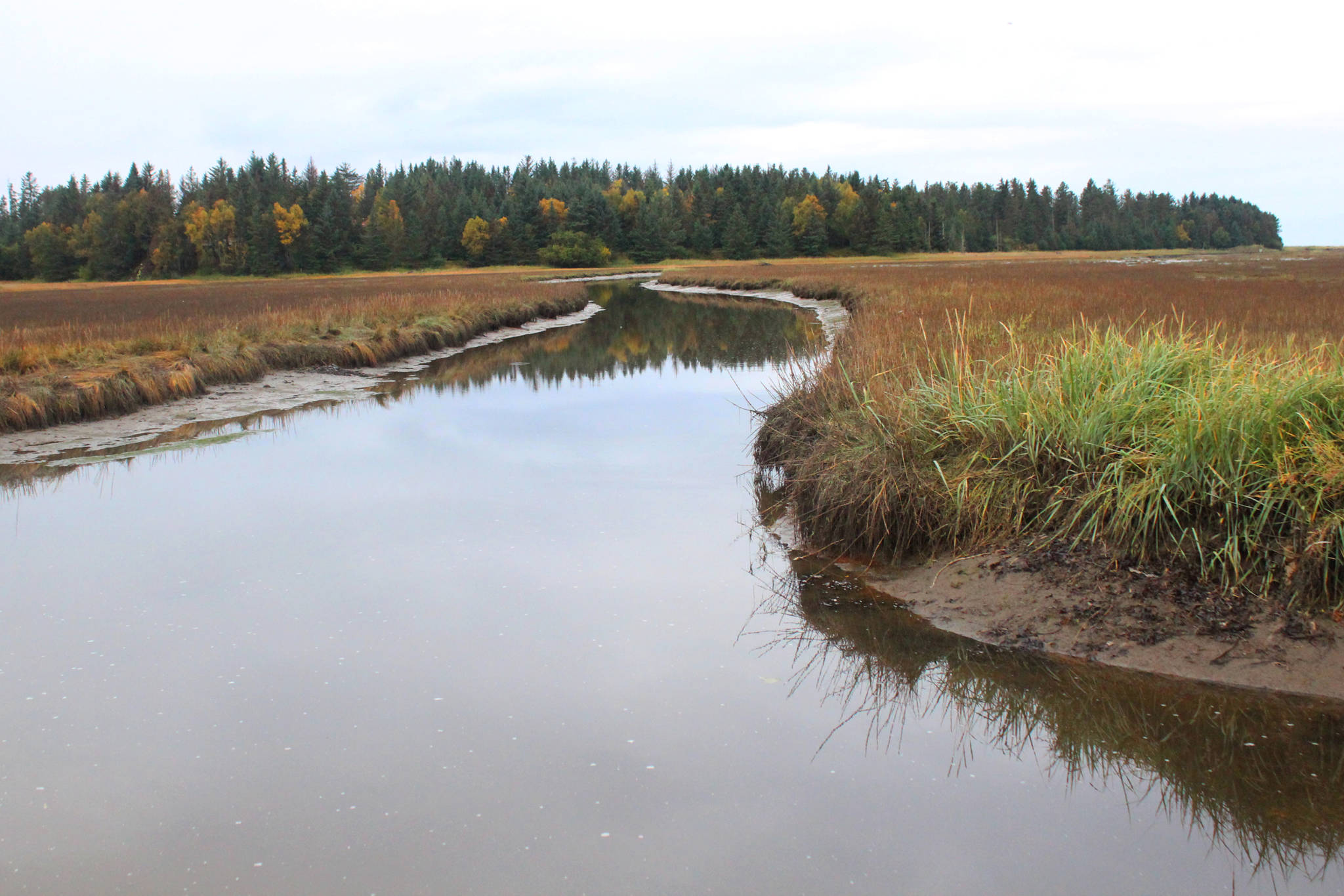What lies in the depths of Beluga Lake is now slightly less mysterious to Jennifer Waltenbaugh’s second grade class from Paul Banks Elementary School.
The class split into two groups last Thursday and merrily explored the man-made lake on one side of the road and the Beluga Slough on the other side. Members of the Center for Alaskan Coastal Studies helped the kids learn all they needed to know about the landforms’ ecosystems and inner workings.
In-between testing out their binoculars and squishing their way through the slough’s dark mud and brackish water, the students learned exactly what brackish water was (water that is a mix of fresh and salty) and why it’s important to the slough and the animals that make it their habitat. Other words that got sussed out and defined that day were: habitat, migration, invertebrates.
While transitioning from the slough to the lake, Trygg Flyum said he had never been to the slough before, but that he had found it to be pretty cool.
“My favorite part was … seeing the dead fish at the end,” he said.
He also enjoyed seeing ducks and other wildlife, he said. Flyum happily recalled parts of his lesson, though some of the vocabulary words were a bit tough.
“I learned that the slough has a black mud called … something,” he said of the brackish water.
Waltenbaugh said the students who went to the lake during the first rotation didn’t realize quite how many critters actually lived in it. It was fun to see them discover that, she said.
“We collected invertebrates. And the more invertebrates that we find, the healthier the body of water,” she said.
Waltenbaugh’s students in the first rotation at the lake found five different kinds of invertebrates.
Her students are currently learning about landforms, so she’s bringing them on trips to different local landforms to better help them compare and contrast them, the lake and the slough being two prime, local examples.
“I think it’s important for all kids to get out there and see it, and learn a respect for it,” she said.
Reach Megan Pacer at megan.pacer@homernews.com.


